Human Use of the Environment

Credit: Green 2558976 by StockSnap is licensed under CC0
Resource Description
Geography 430 is an active, creative learning community focused around understanding the changing relationships between people and their environments, the causes and consequences of environmental degradation, strategies for building a more sustainable world, and the methods and approaches that scholars have used to understand human-environment interactions. The primary course objectives are to help geographers, earth scientists, and other professionals to deepen their appreciation for the complexity of human-environment systems and to develop skills that allow them to interpret, analyze, and communicate effectively regarding human-environment interactions in their lives as students, professionals, and citizens.Independent Study in Geospatial Intelligence

Credit: Computer Laptop by Rudy and Peter Skitterians is licensed under CC0
Resource Description
Independent Study is an opportunity for students to work with individual direction from a faculty member on a topic of mutual interest in geospatial intelligence. Students must have strong professional experience or have taken courses in the subject matter leading up to the chosen topic. Independent Study is reserved for advanced specialties or for intermediate study in areas in which the department does not normally offer course work. Faculty members are under no obligation to accept Independent Study students, but do so as their teaching load permits. This option allows students to complete some of their credit requirements by studying on their own.Independent Study in Geospatial Intelligence

Credit: Photo by Christopher Gower is free for use
Resource Description
Independent Study is an opportunity for students to work with individual direction from a faculty member on a topic of mutual interest in geospatial intelligence. Students must have strong professional experience or have taken courses in the subject matter leading up to the chosen topic. Independent Study is reserved for advanced specialties or for intermediate study in areas in which the department does not normally offer course work. Faculty members are under no obligation to accept Independent Study students, but do so as their teaching load permits. This option allows students to complete some of their credit requirements by studying on their own.Intelligence Analysis, Cultural Geography, and Homeland Security
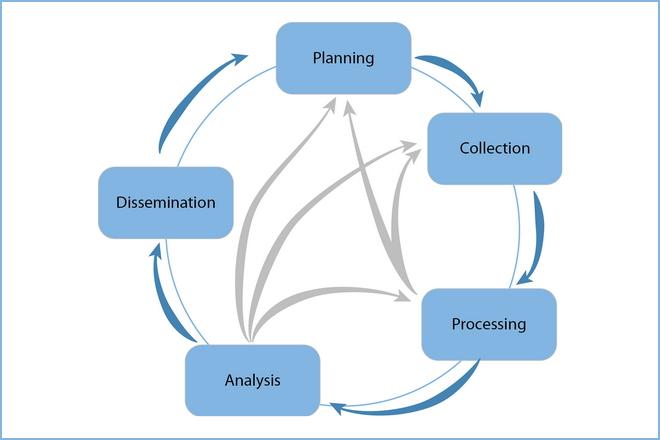
Resource Description
GEOG 571 explores the relationships between culture and civil security and the process of geographically analyzing social, political, economic, and demographic information to understand human history, institutions, and behaviors. It is an elective course in the Geospatial Intelligence Certificate, the Intercollege Master of Professional Studies (iMPS-HLS), and the Master of Geographic Information Systems degree program that is offered exclusively through Penn State's World Campus. It is also one of the optional capstone courses that leads to Penn State's Postbaccalaureate Certificate in GIS. The course consists of projects, associated readings, and exams.Intermediate Spanish
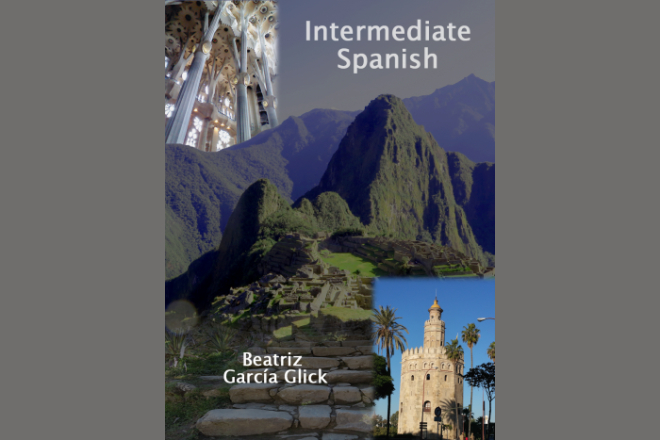
Cover image of "Intermediate Spanish" by Beatriz Glick is licensed under CC BY-NC-SA 4.0
Resource Description
This textbook is designed for an Intermediate Spanish course and is part of an initiative to create online material for students which is free and accessible to everyone. The textbook is comprised of a series of task-based communicative activities that focus on the form so that students can acquire acts of speech, vocabulary, and grammar in context and create conversations related to the topics discussed. The author has developed modified Integrated Performance Assessments or IPA (Adair-Hauck, B. et al. 2006 and Glisan et al. 2007) and Presentation, Attention, Co-Construction, Extension Models or PACE (Adair-Hauck & Donato, 2002) from various stories, songs, cartoons, movies, articles, and other authentic materials that enhance understanding and use of language expressions in context. Students are asked to listen and analyze the Reading text and to produce a presentational task based on it.
Internship

Credit: Home Office 336373 by Free-Photos is licensed under CC0
Resource Description
Are you participating in an internship or supervising someone who is? If so, take a minute to explore this course that accompanies an internship for the Bachelor's degree in Energy Sustainability and Policy. This course provides students opportunities to creatively reflect on their experiences as well as opportunities to prepare for a job search. Job search preparation is done via a SWOT analysis, resume writing, and a mock interview.Introduction to Energy and Earth Sciences Economics

Credit: Gray Laptop Computer Showing Html Codes in Shallow Focus Photography, by Negative Space from Pexels is licensed under CC0
Resource Description
Introduction to Energy and Earth Sciences is an introduction to microeconomic fundamentals with a focus on the applications of economics to energy and environmental markets. We will introduce the economic method of analysis to the environmental and resource questions facing society. We will learn about the market forces, supply and demand and how they are formed from two concepts of law of Diminishing Returns and Diminishing Marginal Utility. We extend our knowledge by exploring factors such as market dynamics and market equilibrium, government intervention and market power. At the end we will apply these concepts to real life examples and address Climate Change and Carbon Policy, Resource Scarcity and Energy Security, and Changes in the Electricity Business.Introductory Meteorology
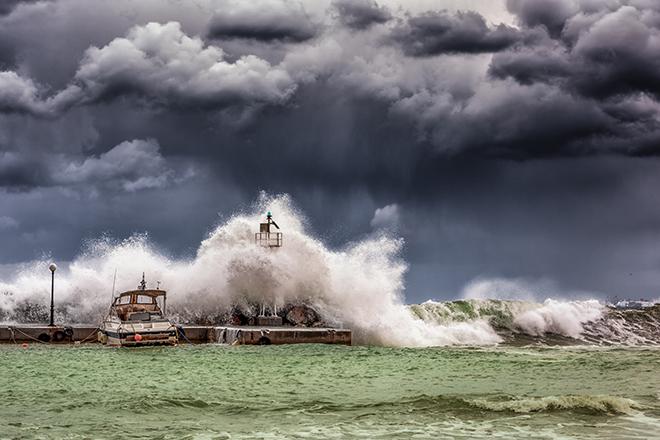
Credit: Big Waves Under Cloudy Sky by GEORGE DESIPRIS is free to use
Resource Description
Benjamin Franklin is credited with saying, “Some people are weatherwise, but most are otherwise.” Ol’ Ben understood that weather can have a great effect on our everyday lives, and he knew the importance of having an understanding of what makes the atmosphere work (and not just knowing when it’s safe to fly a kite). In METEO 3, we will examine all aspects of the weather. You’ll learn the fundamental processes that drive the atmosphere, along with some of the tools we use to measure those processes. You’ll also learn about large-scale weather systems, severe convection, tropical weather, and climate change. As a result, you’ll be a better consumer of weather information and forecasts. So… do you want to be weatherwise?Journaling: An Assessment Tool for Student Engagement Experiences
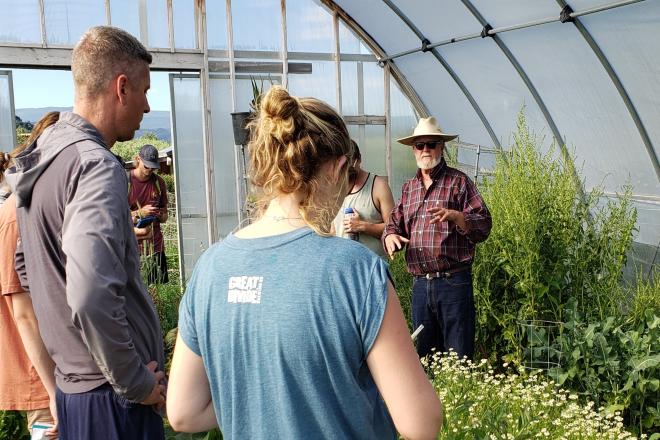
Credit: Haley Sankey © Penn State University is licensed under CC BY-NC-SA 4.0
Resource Description
Education reformer John Dewey said it best: “We do not learn from experience… we learn from reflecting on experience.” This workbook is centered on the idea that experiential learning and time dedicated to guided analysis and reflection are what help students benefit most thoroughly from the experiences they’ve had. Grounded in the cyclical process of Inquiry-Based Learning, the workbook provides students with a structured approach to processing and communicating the meaning of their experiences and thereby producing a valuable assessment of learning. A true workbook, this tool aims to help instructors formulate effective journal prompts and an appropriate process for reflective work related to almost any experiential learning occurrence.
Lapis Lazuli
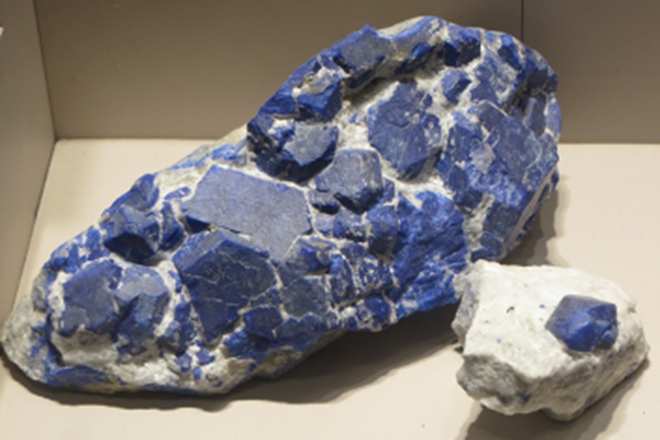
Credit: Lapis Lazuli by Heather McCune Bruhn, Penn State University, licensed under CC BY-NC-SA 4.0
Resource Description
Lapis lazuli is a bright blue semiprecious stone, first known only in remote mountains in Afghanistan and Pakistan, and more recently in Brazil. This module explores lapis lazuli's use first in the production of high status objects in the Ancient world (Ancient Near East, Rome, etc.) and then its use as an expensive blue paint pigment. Since the process for extracting ultramarine blue pigment from lapis lazuli is so long and labor intensive, true ultramarine is still one of the most expensive pigments in the world. You will be able to read about and watch videos detailing the ultramarine extraction process, as well as the production and use of some alternatives to ultramarine blue.
